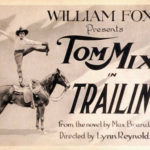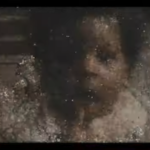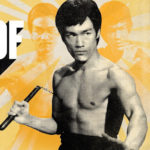The Oddball Worlds of Film Collectors
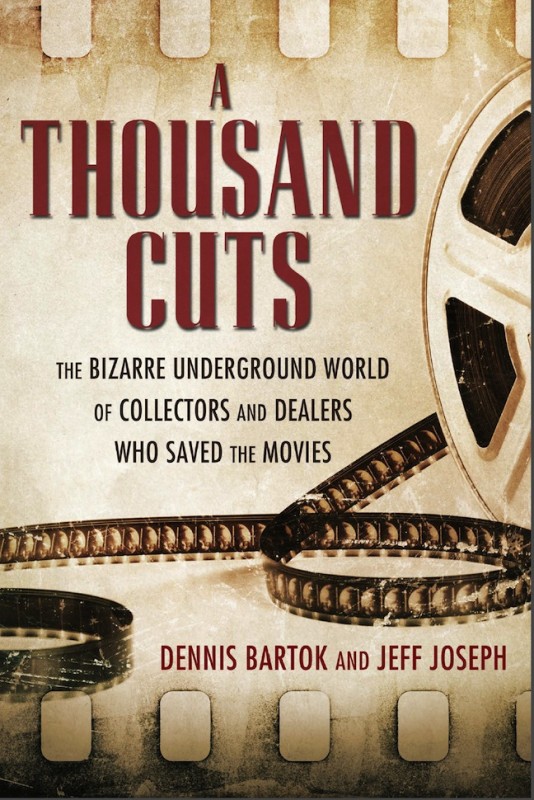 Inside their “strange, wonderful, cluttered little film worlds,” America’s oddball film collectors hoard possessions apparently dearer to them than any human, write Dennis Bartok and Jeff Joseph in A Thousand Cuts: The Bizarre Underground World of Collectors and Dealers Who Saved the Movies.
Inside their “strange, wonderful, cluttered little film worlds,” America’s oddball film collectors hoard possessions apparently dearer to them than any human, write Dennis Bartok and Jeff Joseph in A Thousand Cuts: The Bizarre Underground World of Collectors and Dealers Who Saved the Movies.
n
One clings to the sole surviving copy of an early 1960s Doctor Who episode entitled “The Lion.” Another has dozens of pre-1906 nitrate prints, including a number of exceedingly rare works by pioneer filmmaker Georges Méliès. Another has the apparently only copy of legendary Russian director Sergei Eisenstein’s first film experiment, Glumov’s Diary, a 1923 short that he made for a stage production that hid inside a newsreel by compatriot Dziga Vertov until discovered in a dumpster in New York state.
Similar scrounging led another collector to four minutes of missing footage from the original, 1933 King Kong, “including censored images of Kong the ape toying erotically with Fay Wray’s dress and stomping/munching on a handful of doomed natives,” Bartok and Joseph write. And a tip led another obsessive to an antique shop in Everett, Washington, that held a trove of soft-core “nudie cuties” from the 1940s and 1950s, films “crude and rude, with the stench of the peepshow clinging to them,” and “so far off the radar screen that few people even knew they’d ever existed or were lost.”
Such were the glory days of film collecting, but now, Bartok and Joseph say, “film collectors are an endangered species. They are dying along with their obsession.”
Bartok, a screenwriter, film programmer, and distributor in Los Angeles, describes A Thousand Cuts (University Press of Mississippi), in its introduction, as “a sort of mad Irish wake for an underground subculture of often paranoid, secretive, eccentric, obsessive, and definitely mad film collectors and dealers,” and for “the precious images that would have disappeared into the vastness of history…were it not for the possessive fingers of a handful of film collectors.”
He and Joseph base their lament on interviews with more than 100 US-based film collectors and dealers. It’s a world Bartok glimpsed often while head of programming for the American Cinematheque’s Egyptian Theatre in Hollywood; he is now head of distribution for art-house and cult film distributor Cinelicious Pics. As for Joseph, for many years film collection and dealing was his world. Now working on restoration projects with the UCLA Film and Television Archive, he was formerly one of the most successful American film dealers, as co-owner with his late wife of SabuCat Productions. He recently got out of the business, selling his inventory of over 50,000 original film trailers for classic Hollywood films to the nonprofit Packard Humanities Institute set up by film benefactor David Packard. Among the collection, which the Institute has placed with the UCLA Film & Television Archive and the Academy Film Archive, were such rarities as the sole surviving nitrate copy of the original Citizen Kane trailer, the best collection of 3-D prints anywhere, and such rare outtakes as two reels of 1949 Greta Garbo late-career screen tests.
But Joseph also figured in a series of legal tangles in the 1970s after strong-arming Hollywood studios called in federal authorities to crack down on what they claimed, in most cases erroneously, were breaches of their copyrights.
More on that, later.
Much of the interest of Bartok and Joseph’s book is in the details of collectors’ quests and finds. Some of the figures who appear in the book are well known to film fans, such as film critic Leonard Maltin, who long ago ran a secret film society in New York for fellow buffs, and Academy Award-winning film historian Kevin Brownlow, who recounts his decades-long quest to restore Abel Gance’s mammoth 1927 epic, Napoléon. Some are known figures in film archiving, such as restoration expert Mike Hyatt, of Los Angeles, who has spent 30 years restoring The Day of the Triffids, a 1963 science-fiction film directed by Steve Sekely, based on a post-apocalyptic novel about a merchant sailor who upon recovering his sight in a London hospital finds that a meteor shower has not only blinded earthlings but seeded the planet with giant human-eating plants.
Film collecting, Hyatt told the authors, is “really for people who love the movies. It’s a custodial thing. You try to keep the print as close to its original condition as possible.” But as Bartok and Joseph show, the collecting removes the idiosyncratic custodians from the usual walks of humankind, and leads them further and further into their own extraordinary movie dens, decked with film reels among rare movie posters and other memorabilia, places that few other movie fans will ever see. One such collector, a former projectionist, created within his house a miniature movie palace from fragments of demolished theaters. In the 1970s, in his Hollywood home, ockHudson had his own secret film vault. Collectors go to great lengths to construct their private worlds.
It’s a custodial thing. You try to keep the print as close to its original condition as possible.
Almost invariably, collectors told the authors about “ones that got away,” whether the original Ming the Merciless costume from the Flash Gordon serial, one of the Cowardly Lion costumes from The Wizard of Oz that now sell for millions of bucks, or a sequence from classics like Georges Méliès’s A Trip to the Moon that rotted before purchase and restoration could be arranged.
The collections that result from such activities, writes Bartok, are so idiosyncratic, and such projections of their collectors’ personalities, and psyches, that “sadly, with the passing of the collectors, their private cinema sanctums will also disappear, and with them, a fascinating part of film history, and the history of my city, Los Angeles.”
And just as many film reels are inexorably decaying and fading, so are their collectors. Most are now aging, white men, driven by “a passion that may never quite be equaled, simply because they grew up in an era when access to movies was so limited,” but that has been supplanted by the digital age. The fraternity — one to which very few women ever sought admission — was never large, the authors calculate. They note, for example, that the bible of the field, The Big Reel magazine, had a peak subscription of only 4,800, in the late 1980s. Most collectors lived around Los Angeles or New York, a few in Britain, France, and other countries.
Bartok says Nicholas Basbanes’s 1985 A Gentle Madness: Bibliophiles, Bibliomanes, and the Eternal Passion for Books inspired him to write A Thousand Cuts. Like Basbanes, he seeks to understand the psychology of his subjects. He observes, for example, that a “glorious, unreasonable passion” seems to have driven the collectors he and Joseph interviewed, and occasionally, through the voices of collectors, the authors provide a sense of the nature of this passion. He asks one collector, for example, why it might be that so many film collectors have been gay men. “He closes his eyes for a moment: ‘It’s a thing of fantasy. It’s like watching Fred Astaire: you get wrapped up in the beauty of his movement, and it’s total escapism,’ he responds. ‘You are Fred Astaire. You are Gene Kelly. You are Rita Hayworth. You are Leslie Caron. You are Ginger Rogers. And I guess this desire for beauty and elegance turns a person’s personality if he’s male to the effeminate. Not a sexual desire but a desire for beauty and elegance which you can’t get in today’s world.’”
frustration, and castration
Over the last couple of decades, a great deal of theoretical writing about collecting — its history, its nature, its psychology — has borne on issues like this. The late University of Chicago art historian Michael Camille wrote in Other Objects of Desire: Collectors and Collecting Queerly about collecting as a variety of performance that constructs ways of life, certainly, but sometimes modes of sexuality, too. In the late 19th century, he noted, same-sex desire was “unmentionable” so it had to be “spoken through things.” In modern times, by contrast, the private may be public, so that “style can become metonymic of sexual lifestyle in ways that even Oscar Wilde never imagined.”
It is likely, given Bartok and Joseph’s descriptions of their subjects, that film collectors might relate to Camille’s observation that collecting provides a “productive pleasure felt in the body,” one that “binds the connoisseur to the gesture of the brushstroke and the philatelist to the sensation of the serrated edge.”
“Oddness” is a metric often applied to collectors, but given that studies demonstrate that one in three Americans and Britons is a collector of one kind or another — of everything from Old Masters and movies, to Tupperware and tea towels, to airsickness bags and varieties of dirt — it’s perhaps the metric that is odd. That appears no less so for the diagnosis of some theorists that collecting may often be a way of completing a self that its possessor fears is —like any collection, ironically — fragmentary or partial. That hardly seems pathological. New York psychoanalyst, Werner Muensterberger, depicted collecting in a 1994 book as an (again, inevitably incomplete) “experiment in self-healing” that combats a “tension between id and ego” rooted in childhood trauma. Collecting can at least ease that tension by providing companionship, aesthetic pleasure, and the satisfaction of the hunt, he suggested.
That echoes Sigmund Freud, who wrote of collecting as a compensation for loss, and who after his father died began collecting antiquities. Later in the 20th century, several pioneers of cultural theory, including Theodor Adorno, Walter Benjamin, and Michel Foucault, discussed collecting as an intersection of the public and the personal.
Collected objects, like dreams, are “imbued with self and removed from time.”
Clearly linked to some varieties of film collecting is cultural critic Walter Kendrick’s observation in a 1987 study of Victorian pornography that collecting was first eroticized with the excavation of Pompeii in the mid-18th century. In response to its revelations of erotic cults in the ancient city, British ruling-class men took to furtively hoarding sculptures and other depictions of such activity. Voilà, porn was born.
At the very least, according to Susan M. Pearce, a British specialist in museum studies, collections constitute “a sort of organized mental landscape.” But Bartok and Joseph’s account of film collecting suggests it has been a landscape often littered with sharp rocks. Dealing in porn films could attract death threats from mafiosi. Collecting obsessions busted up many a marriage, and family. Exporting films across a cultural embargo of apartheid South Africa could generate riches in the 1970s, but also draw prison terms.
Bartok and Joseph devote several pages to “the so-called film busts of the 1970s,” in which dozens of film collectors and dealers – Joseph, among them — fell foul of the FBI and the Justice Department. Federal agents formed an odd partnership with the Motion Picture Association of America (MPAA), representing major Hollywood studios, and “harassed hundreds of collectors and dealers and even arrested a number of them on charges of copyright violation and receipt of stolen goods.”
busting the dealers
The studios’ efforts to cast film collectors as film pirates began in August 1971 when federal marshals, along with film-company investigators, raided Evan H. Foreman’s 16mm-film dealership, Filmland, in Mobile, Alabama, and seized six of the film prints he had bought as part of his business of buying and repairing prints to sell to collectors. They issued him with notices of seven civil lawsuits filed by major film studios.
The studios were testing, or trying to ride roughshod over, the “first sale doctrine” that had been established by the 1908 Supreme Court decision in Bobbs-Merrill Co. V. Straus (later codified in the Copyright Act of 1976). It allows purchasers of copyright material to sell it on, although not to reproduce it.
The FBI set about hunting down seemingly every American collector or dealer. Bartok and Joseph detail the case of one target, Roddy McDowall, who in 1968 played the chimpanzee Cornelius or his son Caesar in Planet of the Apes and three sequels, and also had a major role in The Poseidon Adventure in the early 1970s.
A watershed moment that kicked off a general wave of fear and paranoia that lingers in the collecting subculture to this day.
The studios, write Bartok and Joseph, seemed most alarmed that McDowall was taping movies off television broadcasts and transferring his prints to video. “Ironically,” note the authors, “in just a few years, your average American consumer would have just about the same number of videos taped off TV on their newfangled VCR or Betamax machines.”
Under heat from the feds over what was essentially his hobby, McDowall revealed the identities of other film collectors and traders, such as Rock Hudson and Mel Tormé, and charges against him were dropped, although he lost of film collection. Many collectors were charged; many went underground, for fear of FBI actions against them.
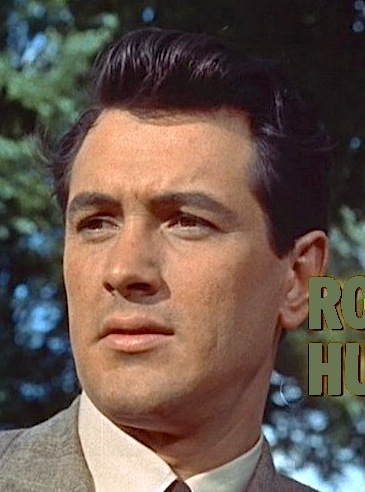
Rock Hudson, film collector. Public Domain.
Meanwhile, back in Alabama, Foreman wasn’t taking the affront lying down. He responded by publicizing the issue, even self-publishing Copywrong, his exposé of the studios’ tactics. And he triumphed, briefly, in the lawsuit that pitted him against the studios, American International Pictures, Inc. v. Foreman. The district-court judge in the case sided with Foreman, the little-guy reseller of 16mm prints of such films as The Blonde Bandit and Curse of the Swamp Creature. But the deep-pocketed studios appealed to the US Court of Appeals for the Fifth Circuit, which reversed, telling Foreman that if he was to claim to be selling copyrighted material whose “first sale” had already occurred, he’d need to be able to show that he’d acquired the films from someone who had legally acquired them from the studios. Foreman had argued that the studios’ practice of transferring prints to television stations, salvage dealers, and other parties was tantamount to “first sale.”
The Court disagreed, putting Foreman out of business. In 1977, nonetheless, the US Court of Appeals for the Ninth Circuit ruled in favor of another dealer, in the process skewering the Justice Department’s claim that the first-sale doctrine was not generally in play, in film collecting. By that time, the US Senate Subcommittee on Patents, Trademarks, and Copyrights, had invited Foreman to testify before it, providing him an opportunity to suggest that the studios had a larger goal that has since come to pass: to extend further and further the length of copyright protection, to crush “the constitutional mandate that copyrights shall be ‘for limited times’” and then leave rights to enter the public domain.
For a variety of reasons, Bartok and Joseph write, film collecting looks certain to fade into history, and with it will go the “communal feeling of film collecting” that attended friends and family members gathering “around the cinematic campfire.” However pleasurable the projecting of film from film reels may be, even collectors are increasingly disinclined to thread film and crank up film projectors in these digital days of easy, high-quality DVDs and Blu-ray discs and the Digital Cinema Packages that are now the near-ubiquitous mode of theatrical screening. The authors say: “Realistically, given the choice, most people would prefer the pristine image of a new Blu-ray disc to a scratchy, possibly faded print. You can buy a new DVD or Blu-ray of Singin’ in the Rain for a fraction of what an original 16mm or 35mm print will still cost you.”
Indeed, writes Bartok, “when the sixtieth anniversary edition of Singin’ in the Rain was released on Blu-ray in 2012, I heard grudging admissions from several collectors that it was the best they’d ever seen the film look, period.”
He quotes one LA-area collector, Ronnie James, whose specialty is vintage TV, including rare kinescopes of live broadcasts from the late 1940s and early 1950s: “Film essentially died in 2005. I mean, now we’re just going through the motions of burying it altogether.”
— Peter Monaghan
Previous Post: The System that Does or Does Not Prevent Online Posting of Copyrighted Moving Images
Next Post: Western Balkans Film Archives Need Help

